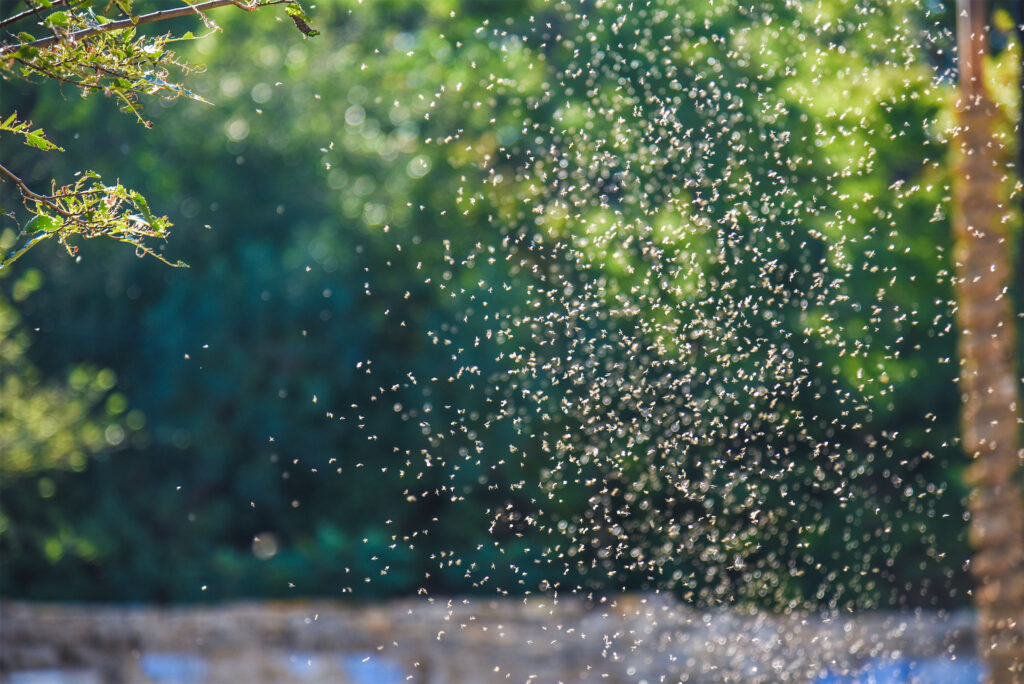Essential Guide for Distributors and Retail Locations Selling Everguard Repellents
Overview: The Insect Boom and Human Activities
Across the United States, from the sunny beaches of California to the bustling streets of New York, there is a notable surge in mosquito and tick populations. This year’s weather patterns—characterized by intense rain events followed by sweltering heat—have created perfect breeding conditions for these pests. The carbon dioxide we exhale and the light from our phone screens in the evenings make us attractive targets for mosquitoes, the deadliest animals on earth due to their role in spreading severe diseases.
Attracting Trouble: How We Lure Mosquitos and Ticks
Mosquitos are relentless hunters, drawn to the carbon dioxide we breathe out and the low lights that adorn our summer nights. The dim glow of our phones as we relax outdoors further attracts these pests, making us prime targets. Ticks, on the other hand, lurk in grassy areas, waiting to hitch a ride on unsuspecting humans and pets. Outdoor activities like hiking, gardening, and picnicking increase our exposure to these pests. The combination of increased outdoor time and ideal breeding conditions has led to a significant rise in pest problems.
The Deadliest Pests: Mosquito-Borne and Tick-Borne Diseases
Mosquito-Borne Diseases
Mosquitos are notorious for spreading diseases such as Eastern Equine Encephalitis (EEE), West Nile virus, yellow fever, Zika, chikungunya, and dengue fever. Experts predict a significant increase in these diseases this season due to favorable weather conditions and the presence of the virus in bird populations. EEE can cause severe symptoms like fever, headache, vomiting, and seizures, with a high mortality rate. West Nile virus often presents no symptoms, but in severe cases, it can lead to neurological complications. Dengue fever, closely monitored in states like Florida, can cause severe pain, bleeding, and sometimes death.
Tick-Borne Diseases
Ticks, particularly deer ticks, are becoming more prevalent across the Northeast and other parts of the country. Babesiosis, a potentially fatal disease, has seen a dramatic rise in states like Maine and Vermont. Symptoms include fever, chills, sweats, and muscle aches, often leading to misdiagnosis as Lyme disease. Climate change has extended the survival period of ticks, resulting in more bites and increased disease transmission. Lyme disease, characterized by a distinctive rash, also remains a significant concern.
Preventive Measures: Keeping Pests at Bay
To help your customers enjoy the great outdoors without becoming a feast for mosquitos and ticks, encourage them to take the following preventive steps:
- Use EPA-Approved Repellents: Recommend Everguard Repellents to be applied when spending time outdoors, especially during peak mosquito activity at dawn and dusk.
- Eliminate Standing Water: Advise customers to remove standing water from their yards to prevent mosquitos from breeding, including emptying buckets, kiddie pools, and cleaning gutters regularly.
- Wear Protective Clothing: Suggest covering up with long sleeves and pants to reduce exposed skin.
- Maintain Your Yard: Encourage keeping grass short and removing leaf litter to minimize tick habitats.
- Use Natural Predators and Treatments: Promote introducing fish to ponds that eat mosquito larvae or using biological mosquito-control pellets.
By being proactive and following these guidelines, your customers can reduce the risk of bites and enjoy a pest-free outdoor experience. A little effort in prevention can go a long way in protecting their health and well-being from these dangerous insects.
Equip your store with Everguard Repellents to help your customers take the best preventive measures and enjoy a safer, more pleasant outdoor experience.

